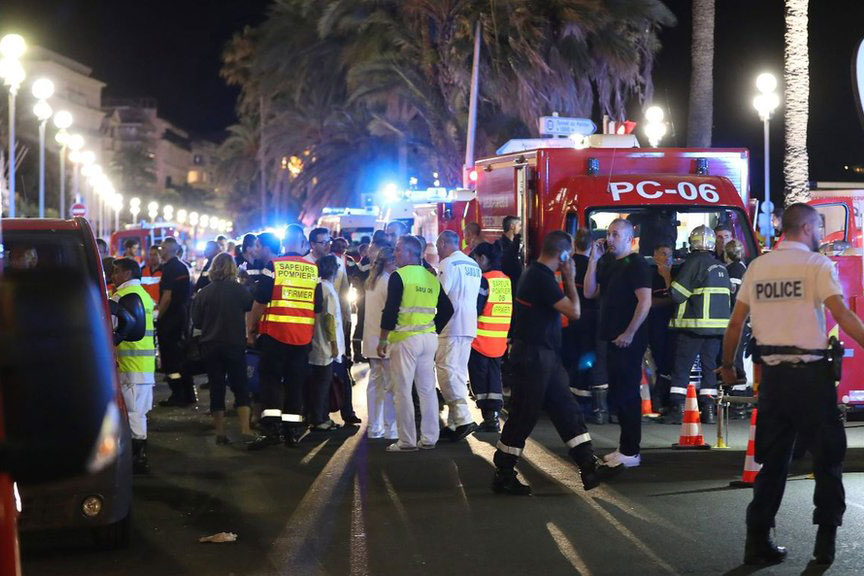The terror in Nice and security across the EU

France is reeling from its third major attack in 19 months after a lone terrorist sped a 19-ton truck into a crowd of people gathered to watch Bastille Day fireworks. The attack killed at least 84 people and injured more than 200 others. Government officials identified the killer as Mohamed Lahouaiej Bouhlel, a native of Tunisia, and on Saturday the Islamic State claimed responsibility for the attack. We asked Northeastern experts to analyze these types of “lone wolf” terrorist attacks, the media’s use of graphic footage from the scene, and what the terror in Nice could mean for the European Union’s security procedures.
The attacker used a large vehicle to complete the attack. Is this a tactical change compared to other recent acts of terrorism?
Max Abrahms, assistant professor of political science and recognized terrorism expert: This attack unfortunately isn’t very tactically original. We’ve seen many examples of terrorists using their vehicles to run into large crowds of people. Palestinian terrorists use this tactic quite a bit, for example. Also, ISIS and Al Qaeda have recently appealed to their followers to use their vehicles to harm as many civilians as possible in crowded areas. What does distinguish the attack in Nice, however, is the number of people killed and injured. This appears to be the deadliest recorded attack using a vehicle.
The terrorist appears to have been acting alone. Are these types of “lone wolf” attacks becoming more common, and how can they be prevented?
Abrahms: “Lone wolf” style attacks are not a new phenomenon. However, the lethality of these types of attacks is rising. Depending on your definition of a lone wolf, the attack in Nice is arguably the most lethal lone-wolf attack in recorded history, as the assailant seems to have carried out this act completely on his own. These types of attacks are notoriously difficult to prevent, as law enforcement officials usually pick up on communication between group members to prevent an attack before it happens. In order to foil a lone-wolf attack, security officials typically rely on sting operations to catch would-be terrorists in the planning stages.
In the aftermath of the attacks, witnesses shared graphic photos and videos from the scene. Several news organizations used these images in their reporting, drawing criticism because of their graphic nature. In a situation like this, how does a new organization determine what is or is not appropriate to publish?
John Wihbey, assistant professor of journalism and new media: Traditional, mainstream organizations typically will not show graphic images of deceased persons, although there are exceptions when the public interest or public policy dimension overrides sensitivities. An example would be the Haitian earthquake disaster, when victims’ families often reportedly encouraged photographers to document the humanitarian problems. Permission of survivors and newsworthiness are two very important criteria. As I understand it, the chief objection in the case of the Nice attack is that sharing graphic images facilitates terrorists’ propaganda goals. While that is a valid message and warning for citizens—and I support that kind of consumer-led decision—news organizations have a different calculus, and provided there is context and proportionality, editors may choose to show images that disturb if they are essential to larger understanding.
In light of the attack in Nice—especially coming so soon after the attacks in Brussels and Paris—do you foresee the EU changing security procedures?
Mai’a K. Davis Cross, associate professor of political science and international affairs, who studies European politics: Since the Brussels and Paris attacks, the EU has been rapidly putting into place new instruments to augment intelligence sharing among member states and with key partners outside of the EU. The release of the new EU Global Strategy last month featured a strong counter-terrorism component, including a focus on stopping radicalization inside and outside of the EU and securing EU borders in light of the many foreign fighters returning to Europe from Syria and Iraq. This most recent attack in Nice will likely give these initiatives added momentum. In addition, if French President François Hollande invokes the Solidarity Clause, as he did in November 2015, the other EU member states will come to France’s aid.




